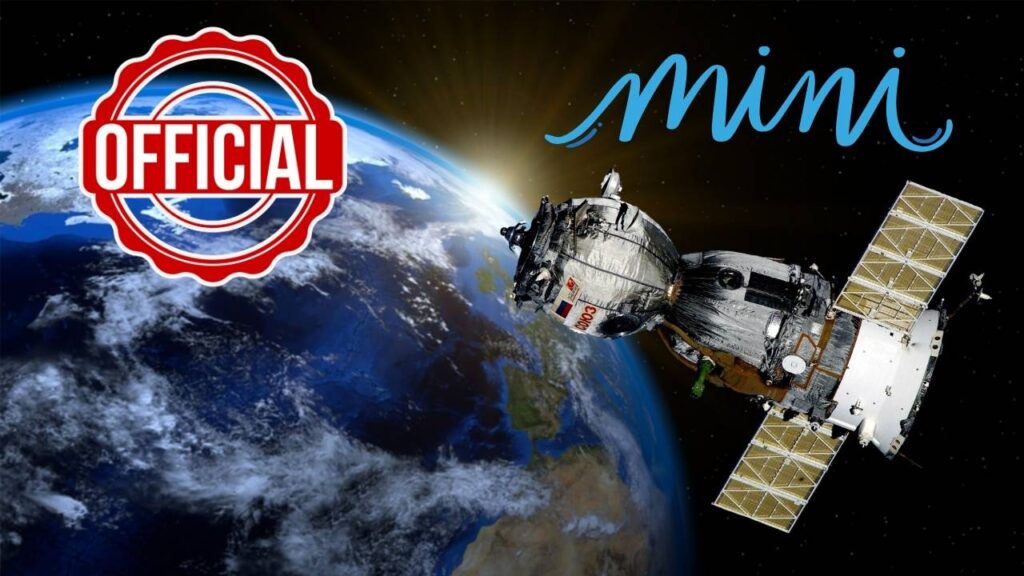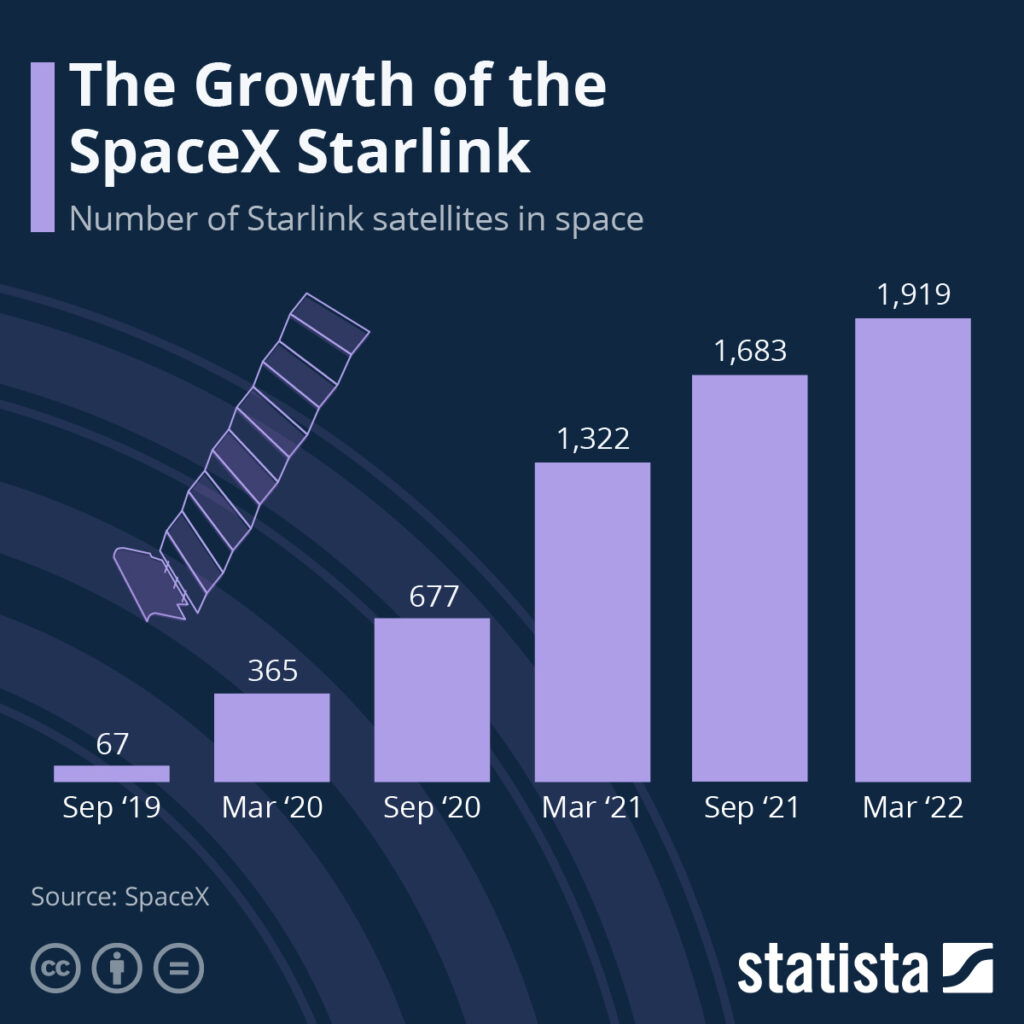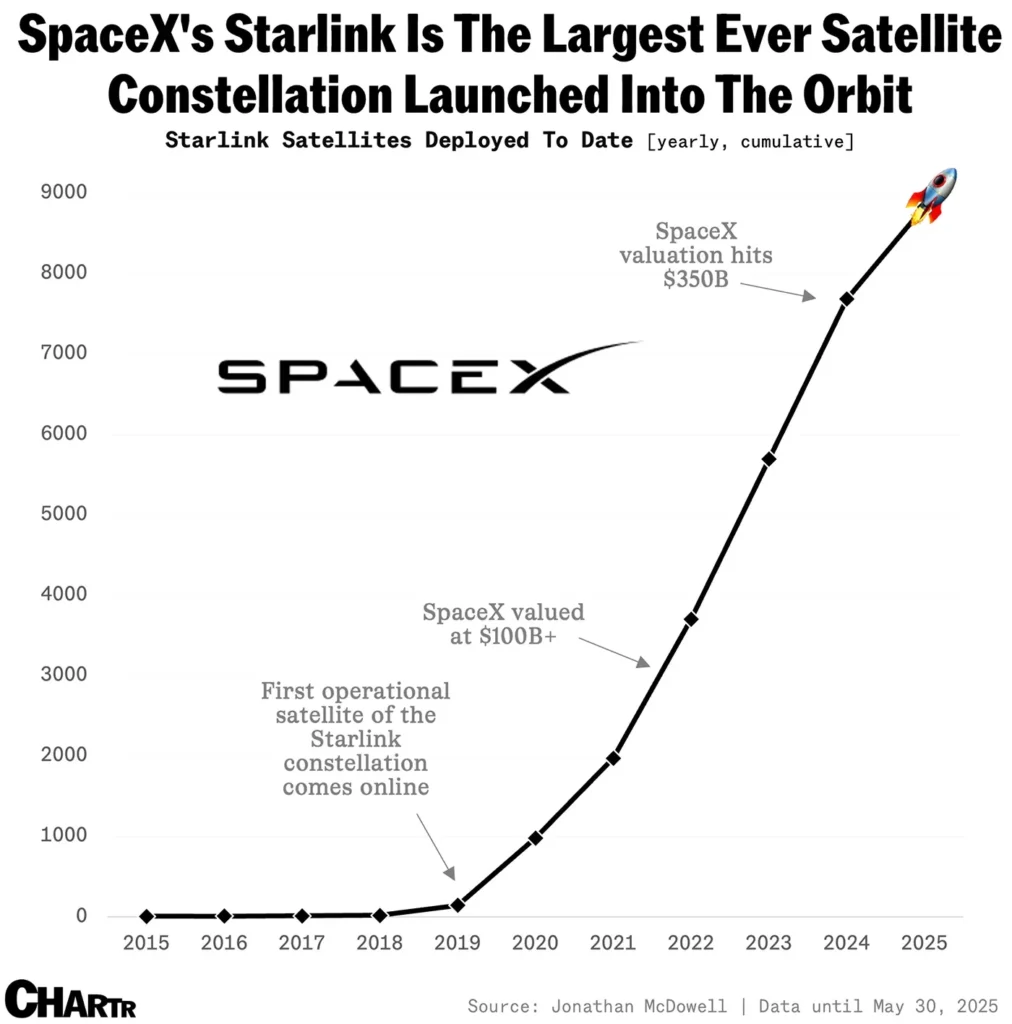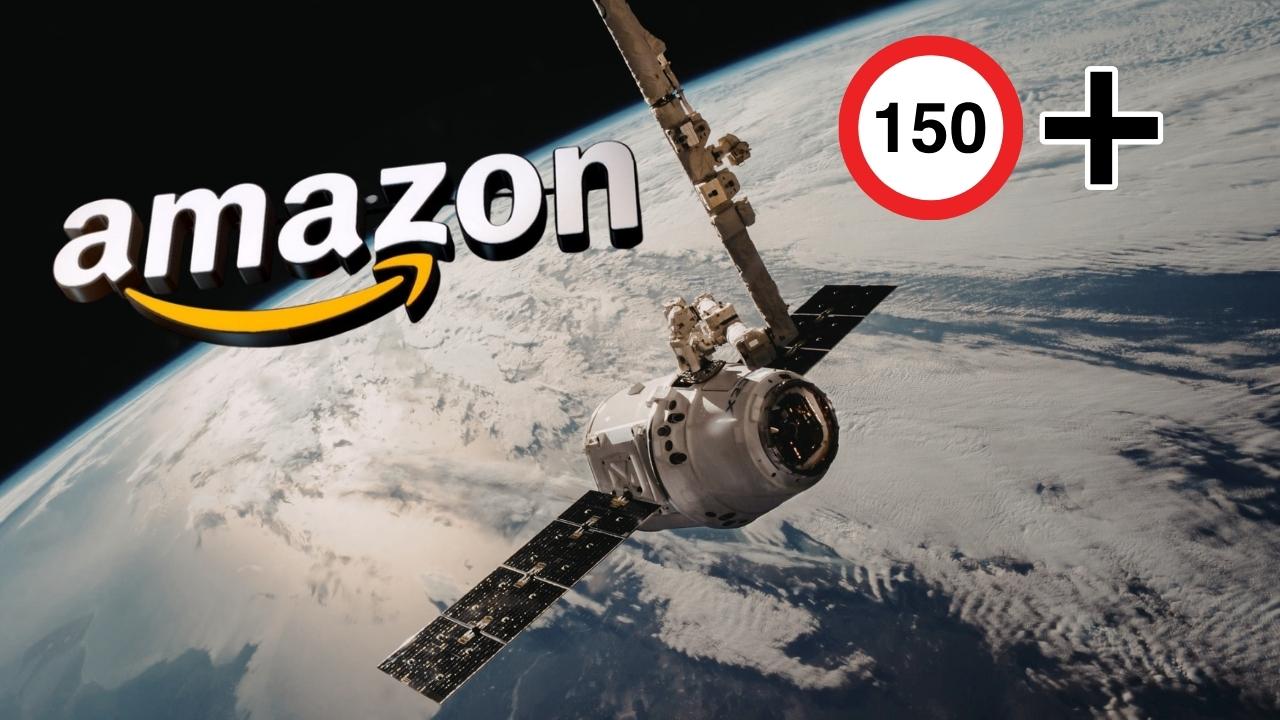
Starlink V2-Mini Satellites Emit 32x More Interference: SpaceX’s Starlink satellites have revolutionized global internet access, especially in areas where connectivity was historically limited or nonexistent. These satellites orbit Earth at low altitudes, beaming broadband internet down to users worldwide. However, a major concern has emerged about the latest generation of Starlink satellites, the V2-Mini models, which are now officially confirmed to emit up to 32 times more radio frequency interference than the original versions. This article breaks down the issue in clear, easy-to-understand terms that anyone—whether a space enthusiast, a professional astronomer, or just a curious reader—can grasp. It also explores the implications for astronomy, practical steps forward, and the balance needed between innovation and scientific preservation.
Starlink V2-Mini Satellites Emit 32x More Interference
The Starlink V2-Mini satellites’ unintended increase in radio frequency interference is a serious challenge for modern astronomy. While these satellites provide revolutionary internet access worldwide, they simultaneously threaten our ability to study the universe’s faintest signals. Finding a balance between technological progress and scientific preservation will require concerted effort from space agencies, commercial satellite operators, researchers, and governments. Protecting humanity’s cosmic window is essential to advancing knowledge and inspiring future generations.
| Key Points | Details & Data |
|---|---|
| Satellite Model | Starlink V2-Mini (second generation) |
| Interference Increase | Up to 32x more radio frequency emissions than the first generation |
| Impact on Astronomy | Interference affects up to 30-40% of radio astronomy data |
| Launch Frequency | About 40 V2-Mini satellites launched weekly since early 2023 |
| Frequency Range of Interference | 73 MHz to 225 MHz — including protected radio astronomy bands |
| Broader Concerns | Threatens international projects like the Square Kilometre Array |
| Ongoing Mitigation Efforts | Collaborative regulatory and technological efforts underway |
What’s Happening with Starlink and Radio Interference?
Since its launch, Starlink’s constellation has grown rapidly with thousands of satellites offering high-speed broadband from space. The V2-Mini satellites, introduced in 2023, add more capacity and power. But the scientific community discovered a troubling side effect — these newer models leak unintended electromagnetic radiation (UEMR) at levels drastically higher than the original Starlink designs.
Picture radio telescopes like super-sensitive antennas that eavesdrop on faint signals from the farthest stars and galaxies. The new V2-Mini satellites are essentially shouting loudly into the frequency bands where these telescopes listen, making it much harder to hear the whispers of the distant universe.
The Astronomical Impact of Starlink V2-Mini Satellites Emit 32x More Interference: Why It Matters
Radio astronomy is a crucial tool for understanding the universe. It helps astronomers:
- Study the formation of stars and galaxies billions of light-years away.
- Detect signals from phenomena like black holes and pulsars.
- Explore the Epoch of Reionization — an early phase of universe history still shrouded in mystery.
- Hunt for extraterrestrial signals.
When satellite emissions interfere with these measurements, it’s like trying to hear a pin drop at a rock concert. This interference can:
- Spoil up to 30-40% of radio telescope data in affected frequency bands.
- Force observatories to pause or reroute data collection, limiting scientific output.
- Violate internationally protected radio frequency bands reserved exclusively for research.
Given that SpaceX is launching approximately 40 V2-Mini satellites every week, the scale of the problem is growing exponentially.
The Science of Interference: What Studies Show
Leading observatories such as the Low-Frequency Array (LOFAR) in the Netherlands and others in Australia have extensively studied the issue. Research published in Astronomy & Astrophysics and other journals details that:
- The V2-Mini satellites emit broadband radio waves ranging from 73 MHz to 225 MHz.
- Emissions can reach signal intensities of over 500 Janskys, much brighter than typical cosmic radio signals.
- These emissions appear both broadband (across multiple frequencies) and narrowband (specific frequencies), complicating mitigation.
- Some detected frequencies overlap with terrestrial FM bands but also include signals in protected scientific bands, an illegal interference.
One study identified intermittent pulsing emissions repeating every 100 seconds, suggesting complex interference behavior. These results highlight a need for new regulatory and technical solutions.

What is SpaceX’s Position?
SpaceX has acknowledged radio interference concerns and claims it is developing technologies to reduce unintended emissions. These include:
- Improved beam-forming technology to focus transmissions more precisely.
- Collaborations with industry bodies for frequency coordination.
- Regulatory filings indicating efforts to monitor and control interference.
Despite these efforts, the rapid launch cadence means new satellites are added before solutions fully materialize, compounding the problem. The scientific community pressures for more transparency and stricter controls.
Impact on Everyday Users
If you’re worried this means your Starlink internet will falter, here’s the good news: the interference mainly impacts external radio astronomy equipment searching the skies for weak cosmic signals, not your internet connection.
Your streaming, online gaming, or video calls should work as expected since they use deliberate, focused satellite signals. The damage, however, is to astronomy—the pursuit of understanding the cosmos.
Practical Steps Forward: Mitigation and Advocacy
The way forward involves collaboration between satellite companies, scientists, governments, and regulatory agencies.
For Astronomers and Scientists:
- Enhance real-time monitoring of satellite interference.
- Develop algorithmic filtering methods to clean contaminated data.
- Advocate for international policy enforcement protecting radio astronomy frequencies.
For Policymakers and Regulators:
- Enforce stricter limits on unintended satellite emissions.
- Ensure satellite operators demonstrate minimal radio pollution before approval.
- Coordinate frequency sharing equitably between commercial and scientific users.
For SpaceX and Satellite Operators:
- Accelerate development of emission control technologies.
- Limit high-cadence launches until interference is curbed.
- Increase cooperation with scientific organizations globally.
These efforts are crucial to preserving humanity’s window into the universe while supporting ground-breaking internet access innovations.

Additional Details: Broader Context and Public Awareness
The explosion of satellite megaconstellations is reshaping near-Earth space. Alongside SpaceX’s Starlink, multiple companies plan thousands more satellites in orbit over the next decade. This growth promises better global connectivity but creates a crowded radio environment.
Astronomers call this a “double-edged sword.” On one hand, satellites bring societal benefits by connecting the unconnected; on the other, they threaten centuries of careful efforts to keep Earth’s skies a quiet zone for scientific observation—a space “commons” vital for our quest to understand the cosmos.
Public awareness campaigns and coordination meetings between industry and researchers have gained traction, but more advocacy is needed. Citizens interested can support groups like the American Astronomical Society and participate in dialogues emphasizing sustainable space use.
What Was Packet Radio? The Original “Digital Mode” for Hams
Ham Radio Repeaters Explained: How They Work and How to Use Them
What is Winlink? Explaining the Digital Tool That’s Critical for ARES Operations







